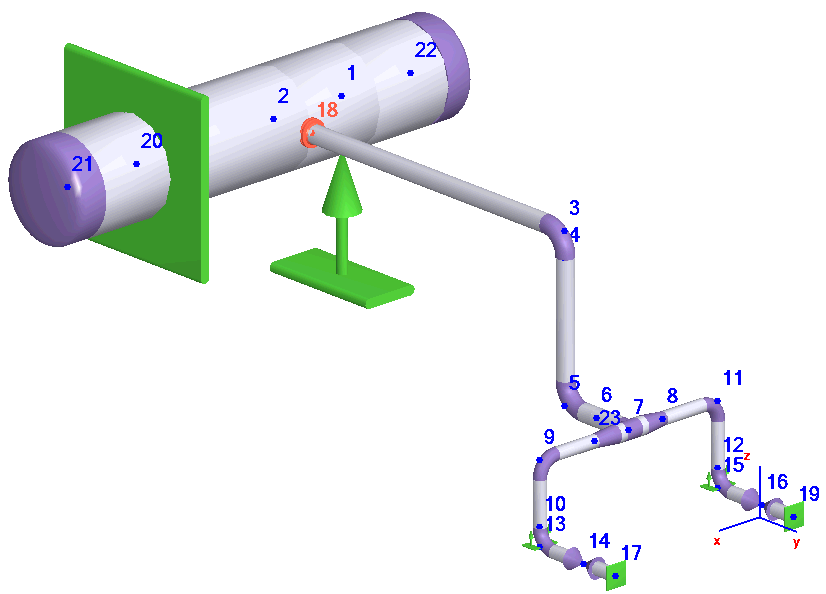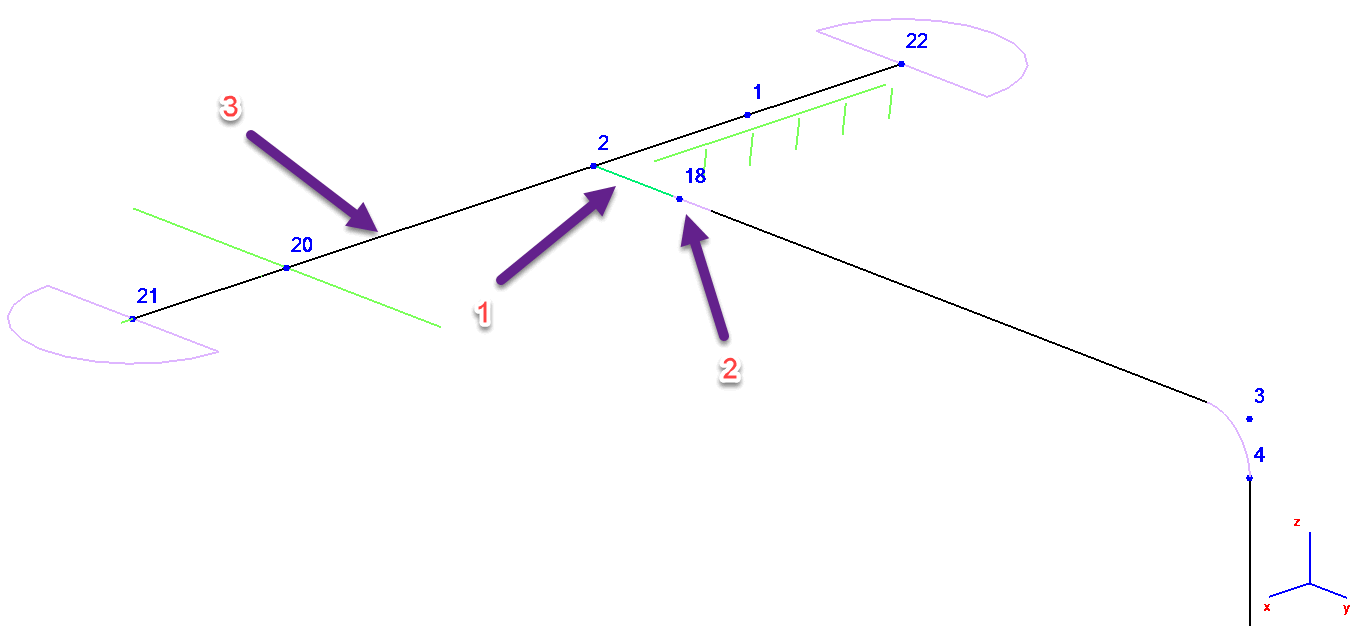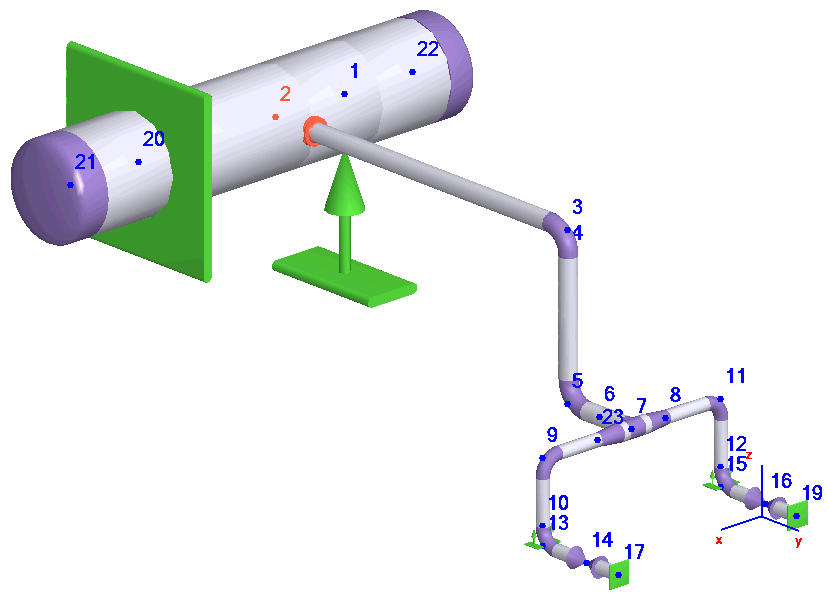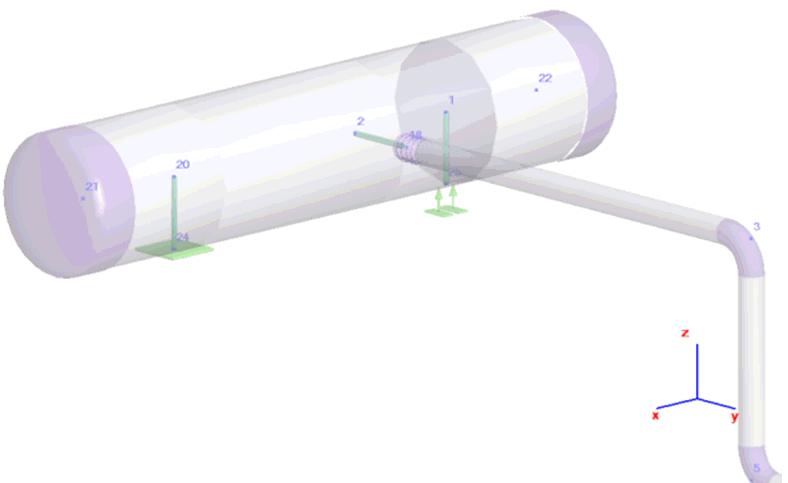

Read about START-PROF pipe stress analysis software
The modeling of horizontal vessel procedure using START-PROF software is almost the same as modeling of vertical vessels. Please refer to Modelling of Vertical Vessel. But there are some special features, that we will discuss here.
There are the same three options to model the horizontal pressure vessels in START-PROF software as for vertical vessels:
1. Using nozzle element at the pipe end node.
2. The vessel can be modeled using cylindrical shell element (21-22 on the picture below). The length between nozzle and intersection point between pipe axis and vessel axis is modeled using rigid element (2-18 on the picture below). Nozzle element should be inserted into the point between pipe and rigid element (18). Both "local shell flexibility" and "global beam flexibility" will be taken into account using this method. This is a classic method, which is known by many pipe stress engineers


1 - Rigid Element, 2 - Nozzle Element, 3 - Cylindrical Shell Element
3. This method is faster and easier than method #2 gives the same analysis result. The vessel is modeled using cylindrical shell element. Nozzle element is inserted into connection point between pipe axis and cylindrical shell like a "tee" (node 2 on the picture below). In this case START-PROF will automatically add the internal hidden rigid element between nozzle and node 1. Using this method you may skip the step of creating the rigid element manually and save the time. Both local and global flexibilities will be taken into account like using method #2.

The methods 2 and 3 can be used to model the equipment of any complexity and connection of any number of nozzles into the one vessel.
When modeling large diameter vessel and place sliding support or fixed anchor, actually these supports are placed on the vessel axis

But the real supports will be lower. This eccentricity may lead to inaccurate results of support loads and stresses. We recommend to model the supports using the rigid elements like shown on the picture below:

The piping model in START-PROF will looks like this:

The rigid element length should be equal to the half of the vessel diameter and added height of the vessel support. Rigid elements will model the boundary conditions more accurate, and take into account the vertical thermal expansions of the vessel body.